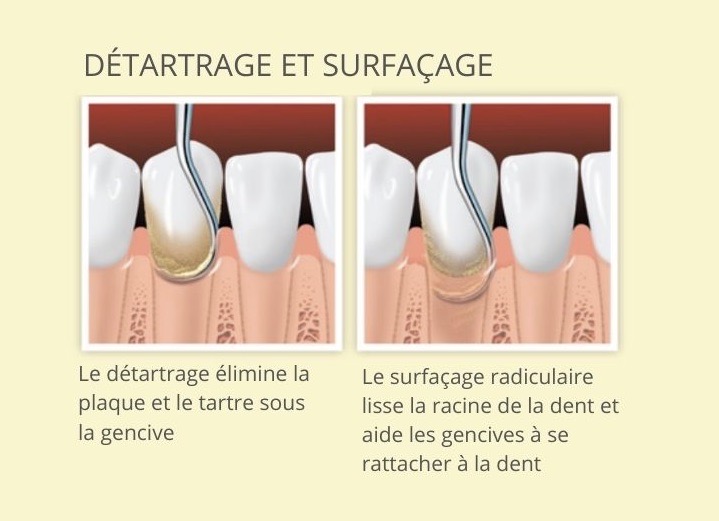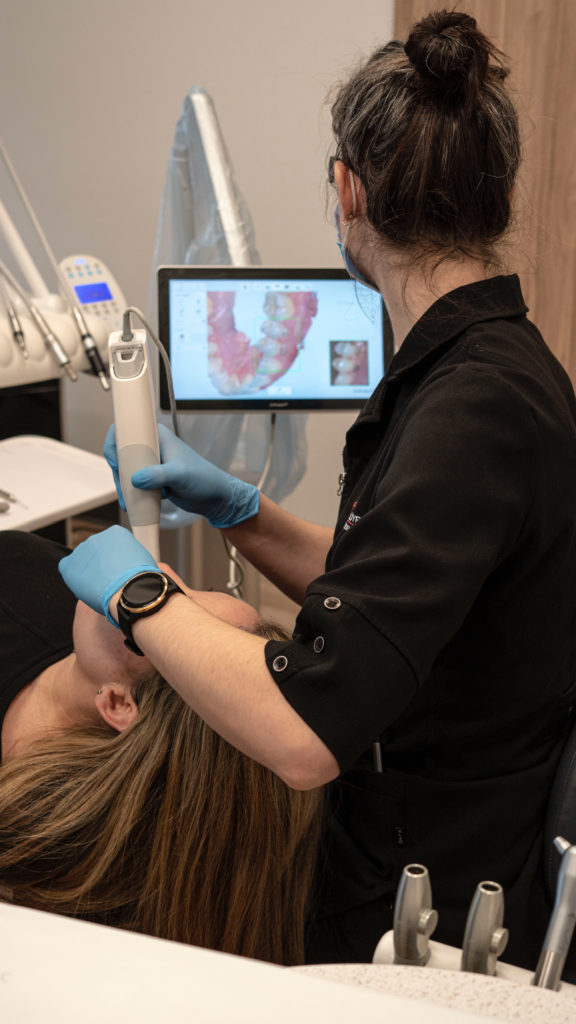What is periodontal disease?
Periodontal disease is a bacterial infection attacking the foundation of your teeth. It is usually caused by plaque and calculus build-up around the gumline. If your body doesn’t respond well to this invasion, it will lead to tooth loss.
Other symptoms include: Swollen gums that bleed easily, Sensitive teeth, Bad breath (halitosis), Gum recession and bone loss.If you are diagnosed with periodontal disease, you will be redirected to our specialist department at the Clinique des dentistes spécialistes de Châteauguay , (located in the same building)


Periodontal disease treatment
Treatment for gingivitis and periodontitis usually follows a specific sequence, and can include non-surgical therapy such as deep cleaning (we call this scaling and root planing), and depending on the severity, can also include surgical therapy, such as a pocket reduction.
Every case is different, and requires an individualized treatment plan.
Ensuring that no inflammatory periodontal disease is present in the mouth is very important, because many other dental treatments, such as crowns and bridges, removable partial dentures, and implants, all depend on the teeth having solid foundations in bone.
What is gum recession?
Gum recession is the loss of tissue along your gum line. It can be linked to the natural aging process, or abrasive brushing and flossing habits.
Common signs of gum recession are tooth sensitivity, teeth that look longer than they used to, and loose teeth. Left untreated, the ultimate result can be tooth loss. Gum recession is treatable either by prevention or for more advanced cases by a surgical procedure.
Soft Tissue Augmentation (Gum Graft)
Also known as gum grafting, soft tissue augmentation is a traditional and effective method for treating receding gums.
This procedure involves using donor tissue or soft tissue from your palate to cover exposed root surfaces and rebuild the gum line.


